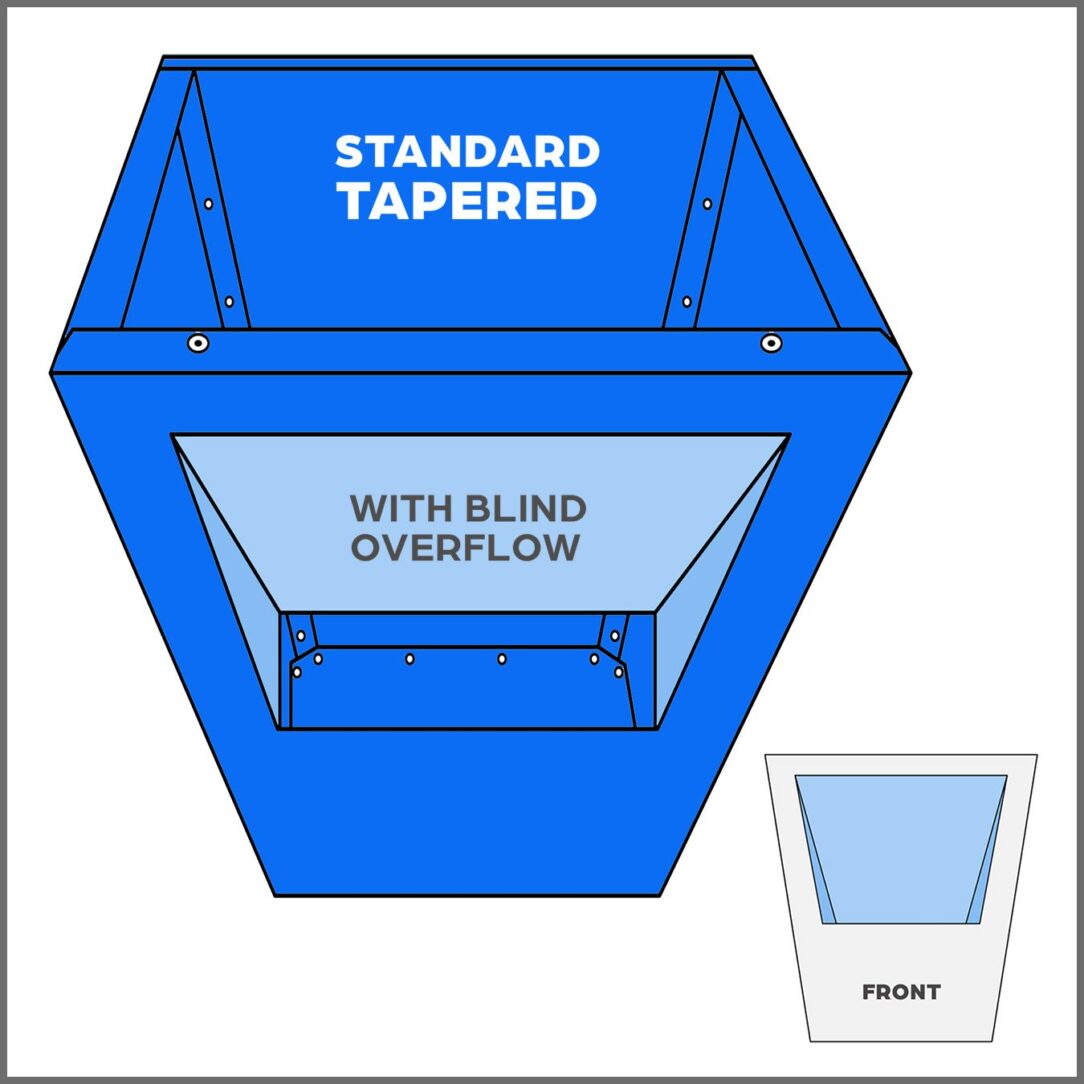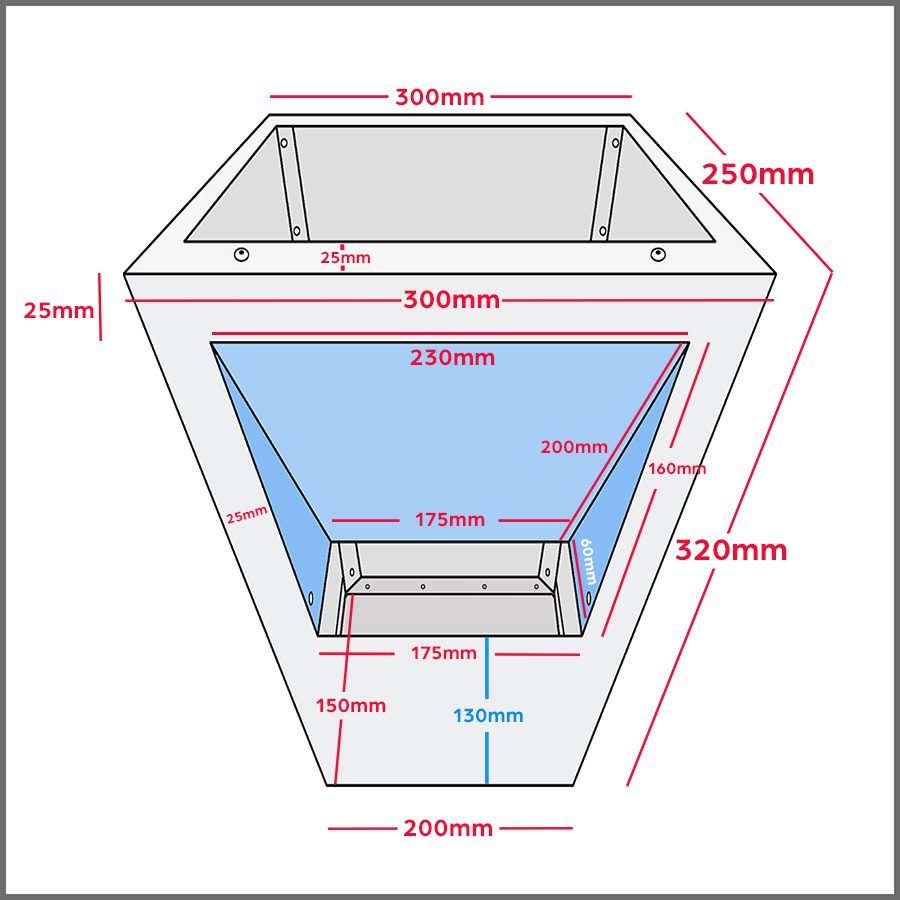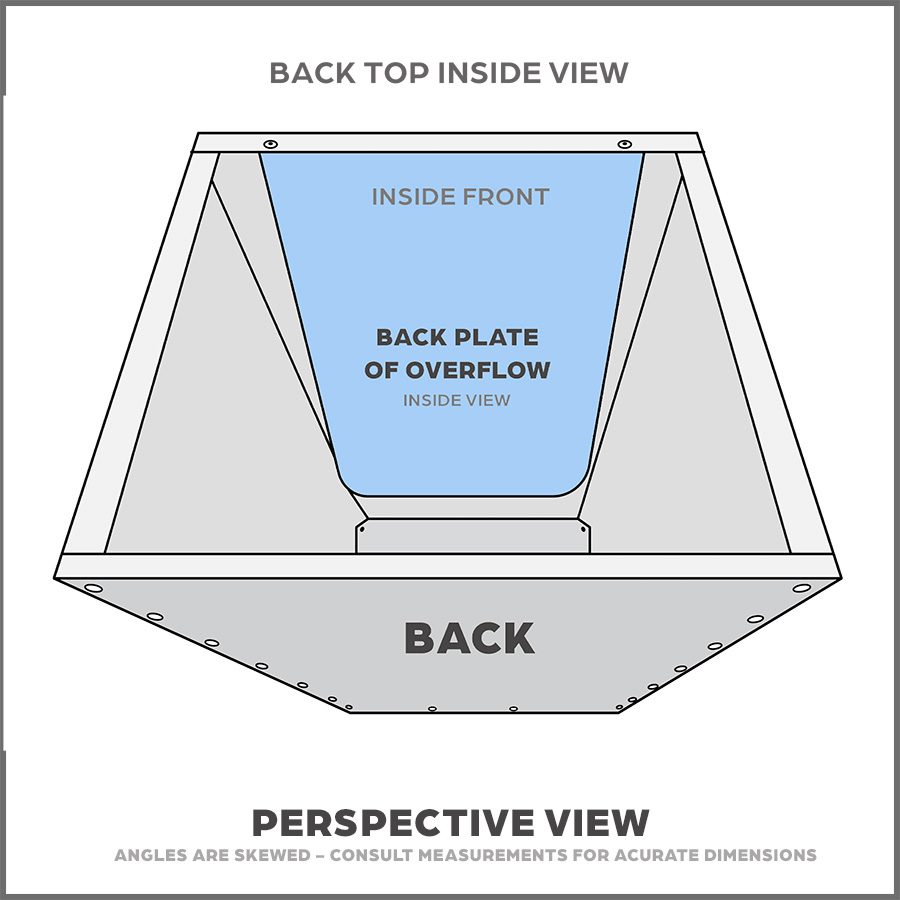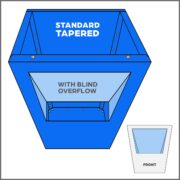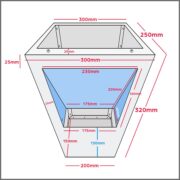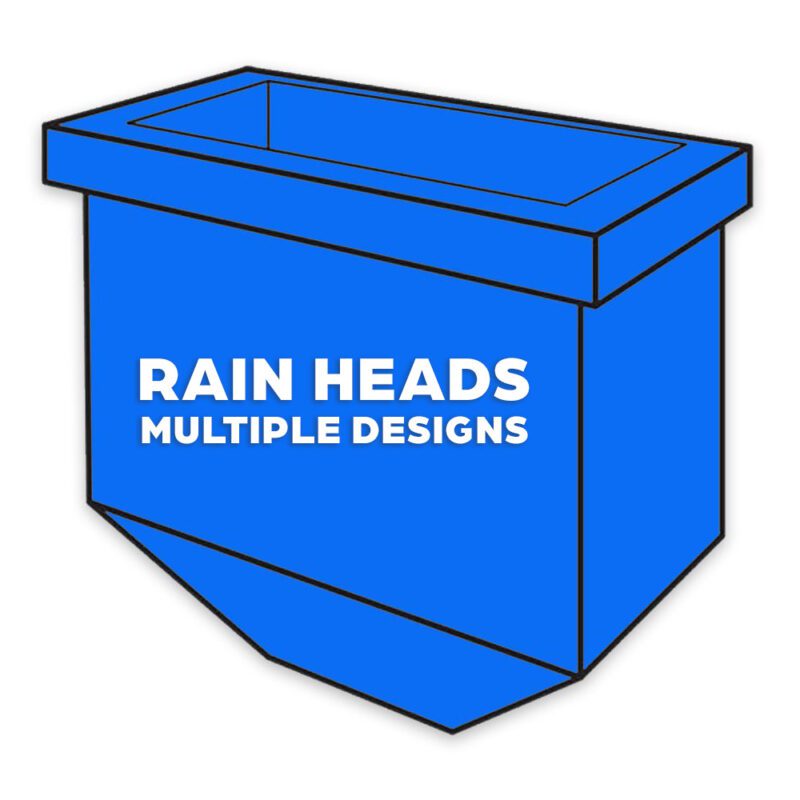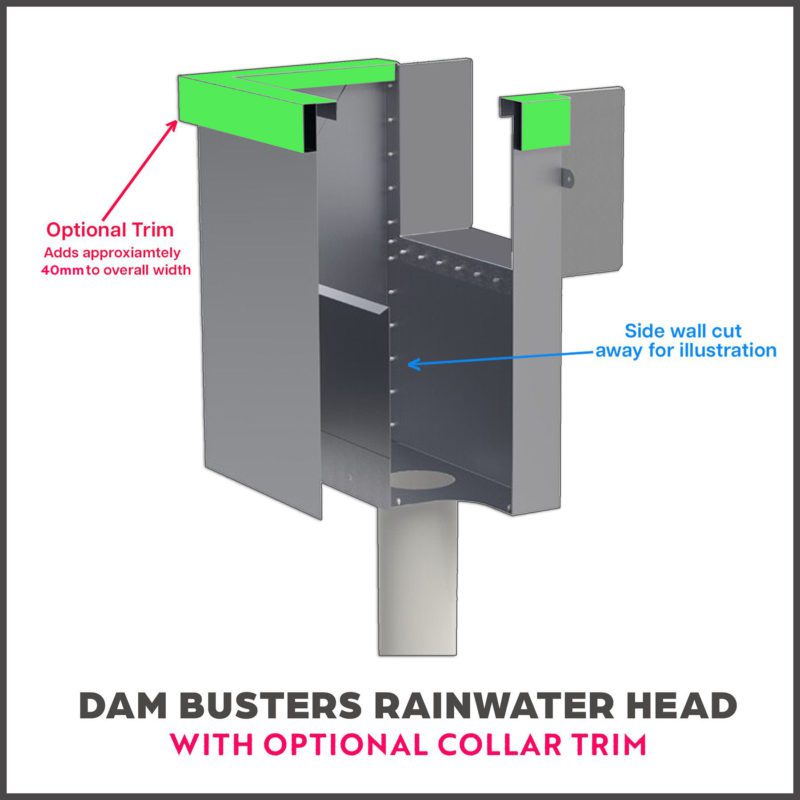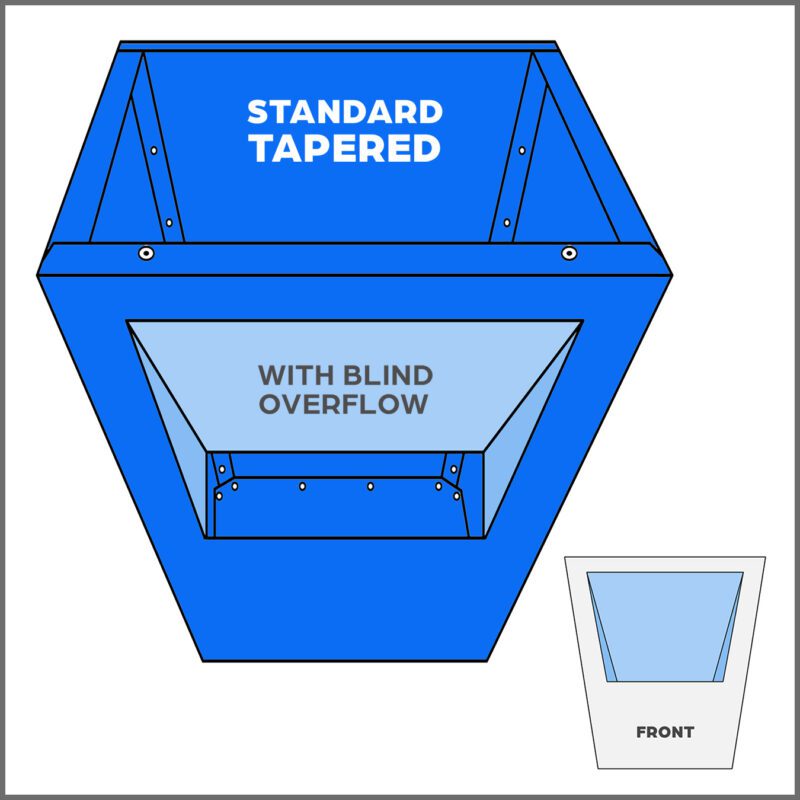Rainwater Heads with Overflow
$297.00 – $451.00 & Free Shipping
- NEED MEASUREMENTS – CLICK HERE >
- USE ORDER FORM INSTEAD >
- AUST. DESIGN REGISTERED
Choose Options Below to Start Your Order
Description
Rain Heads
- Free Shipping in Australia (Except NT)
- Blind Overflow Designed by RVA
- Custom Made In-House
- Free Nozzle Included
- We do not ship to NT
- Order in Colorbond
MATT & ULTRA Option – Additional $30+ Per Rain Head Added Automatically
Comprehensive Guide to Roof Plumbing and Water Runoff Management in Australia
Introduction:
Roof plumbing is a vital component of any building’s infrastructure, particularly in Australia where heavy rainfall is a common occurrence. Whether you’re a homeowner or a commercial property owner, understanding the intricacies of roof plumbing and water runoff management is crucial for maintaining the integrity of your property. In this extensive guide, we will delve deep into the world of roof plumbing, addressing common queries and providing detailed advice to novices seeking solutions to water runoff issues.
1. **The Importance of Rainwater Heads (Rainheads):**
Rainwater heads, also known as rainheads, are integral to roof plumbing systems as they act as collection points for rainwater while preventing debris, leaves, and other particles from entering the downpipes. By capturing and filtering rainwater before it enters the drainage system, rainheads help maintain its efficiency and prevent blockages that could lead to water damage.
2. **Australian Standards for Rainheads:**
In Australia, rainheads are governed by strict standards outlined in the Plumbing Code of Australia (PCA) and AS/NZS 3500 Plumbing and Drainage standards. These standards specify requirements for the design, installation, and performance of rainheads to ensure compliance with building codes and regulations.
3. **Understanding Different Styles of Rainheads:**
Rainheads come in various styles and designs to suit different aesthetic preferences and functional requirements. Common styles include box-shaped, cylindrical, and decorative designs. The choice of rainhead style often depends on factors such as architectural design, rainfall intensity, and maintenance considerations.
4. **Sizing Rainwater Downpipes for Optimal Performance:**
The size of a rainwater down-pipe is crucial for ensuring efficient water drainage without overflow or blockages. Factors such as roof area, rainfall intensity, and local regulations must be considered when determining the appropriate diameter of the downpipe. Calculations based on these factors help ensure optimal performance of the drainage system.
5. **Exploring the Benefits of Rain Chains vs. Gutter Downspouts:**
Rain chains offer an alternative to traditional gutter downspouts, providing both functional and aesthetic benefits. They facilitate smooth water runoff while adding visual interest to the exterior of a building. Rain chains are particularly popular for their decorative appeal and soothing sound effects as rainwater cascades down.
6. **Understanding Proper Installation Practices for Rainwater Downpipes:**
Proper installation of rainwater downpipes is essential for ensuring the efficiency and longevity of the drainage system. Downpipes should be positioned at strategic points along the gutter line and securely fastened to the building’s exterior. Additionally, downpipes should never be connected to soil pipes to avoid contamination of the water supply.
7. **Exploring the Purpose and Installation of Rainheads:**
Rainheads serve multiple purposes, including debris filtration, water collection, and aesthetic enhancement. Proper installation involves positioning the rain-head at a strategic point along the gutter line, ensuring seamless integration with the downpipe system. Regular maintenance is also essential to ensure the continued effectiveness of rainheads.
8. **Navigating Australian Standards for Stormwater Drainage:**
Stormwater drainage systems in Australia must adhere to stringent standards outlined in AS/NZS 3500 Plumbing and Drainage. These standards specify requirements for the design, construction, and maintenance of stormwater drainage systems to ensure effective management of runoff and minimize the risk of flooding or erosion.
9. **Connecting Downpipes to Stormwater Systems for Efficient Drainage:**
Downpipes should be connected to stormwater drainage systems to channel rainwater away from the building’s foundation and surrounding areas. Proper connection prevents water accumulation and potential structural damage caused by excess moisture.
10. **Understanding Slope and Sizing of Stormwater Drains:**
Stormwater drains should be installed with a sufficient slope to facilitate proper drainage. The recommended slope typically ranges from 0.5% to 1%, ensuring swift water flow towards designated discharge points. Stormwater pipes commonly come in diameters of 90mm or 100mm, depending on the volume of runoff to be managed.
11. **Exploring Alternative Drainage Solutions:**
In addition to traditional downpipes, there are alternative drainage solutions available for managing rainwater runoff. These include channel drains, permeable paving, and rain gardens. Each option offers unique benefits and may be suitable for different property types and environmental conditions.
12. **Best Practices for Connecting Rainwater Downpipes to Drains:**
Proper connection of rainwater downpipes to drains is essential for ensuring efficient drainage and preventing water damage to the property. Downpipes should be securely fastened to the building’s exterior and connected to drains using appropriate fittings and connectors.
13. **Understanding the Path of Rainwater in the Ground:**
Once rainwater enters the ground, it follows a natural path of infiltration and percolation, replenishing groundwater reserves and nourishing vegetation. Proper landscaping techniques can help enhance the infiltration process and minimize runoff, reducing the risk of erosion and pollution.
Conclusion:
Mastering the principles of roof plumbing and water runoff management is essential for maintaining the integrity and longevity of residential and commercial buildings in Australia. By understanding the various components of roof plumbing systems, adhering to relevant standards and regulations, and implementing best practices for installation and maintenance, property owners can effectively mitigate water-related issues and ensure the optimal performance of their drainage systems. Remember, proactive management of rainwater runoff is key to protecting your property and preserving the environment for future generations.
Additional information
| Colour | MILL FINISH (Metal Look), Basalt, Bluegum, Classic Cream, Cottage Green, Deep Ocean, Dover White, Dune, Evening Haze, Gully, Ironstone, Jasper, Manor Red, Monument, Night Sky, Pale Eucalypt, Paperbark, Shale Grey, Southerly, Surfmist, Wallaby, Woodland Grey, Windspray, Zincalume, Matt Basalt, Matt Bluegum, Matt Dune, Matt Monument, Matt Shale Grey, Matt Surfmist, Matt Windspray, Ultra Dune, Ultra Surfmist, Ultra Shale Grey, Ultra Wallaby, Ultra Woodland Grey, Ultra Monument |
|---|---|
| Sizes | Standard, Medium |
| Colorbond® Nozzle | 100mm Round – Included Free, 100×50 Rectangle – Included free, 100×75 Rectangle – included free, 90mm Round – Included Free, No Nozzle Required |
| Shipping to: | QLD, NSW, VIC, SA, WA, ACT, TAS |

